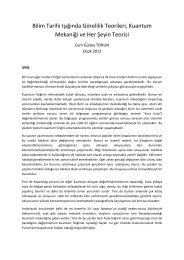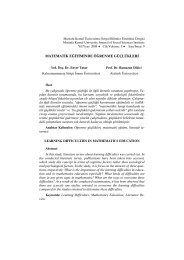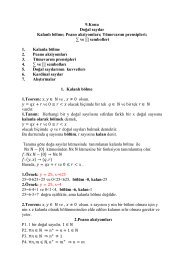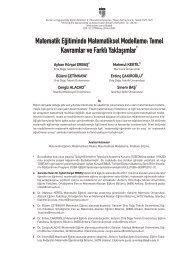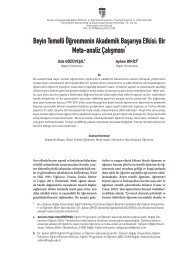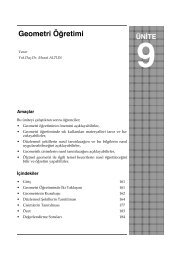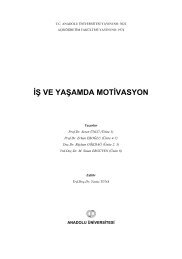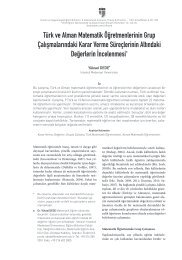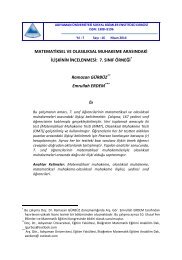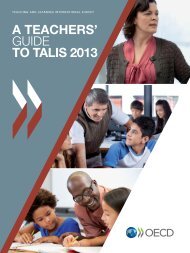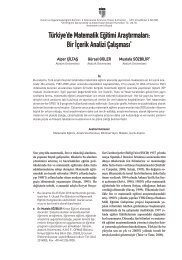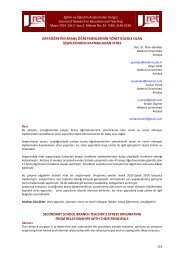Ufuk-U_niversitesi-SBE-Dergisi-S-ayı-5-kopya
Ufuk-U_niversitesi-SBE-Dergisi-S-ayı-5-kopya
Ufuk-U_niversitesi-SBE-Dergisi-S-ayı-5-kopya
Create successful ePaper yourself
Turn your PDF publications into a flip-book with our unique Google optimized e-Paper software.
focus teaching on this. Accordingly, an EAP curriculum might have to do with the questionssuch as “Why are the students learning English?", "What language and practices are theygoing to need further?" or as a more judgmental question "Does this curriculum really helpthem to satisfy their needs?”.Liyanage and Birch (2001) emphasize that any English course that is designed to preparestudents to cope with the demands of university study has to focus on what Cummins (1982,cited in Liyanage & Birch, 2001) refers to as "context-reduced" language which is rather moreabstract and relies less heavily on an immediate context; and it has to be different from thecontent of general ESL courses that focuses on the "context-embedded" language whichemphasizes mainly on everyday interaction. Here, it might be concluded that English forGeneral Purposes (EGP) and EAP have totally different curricula in terms of learner profile,course content, goals, and instruction.Jordan (1997) claims that curricula of EAP courses aiming at catering for students who aretaking courses of advanced study at university level have to be academic-oriented andpresuppose solid "literacy abilities". This assertion corresponds well with Liyanage andBirch's (2001) suggestion that the EAP curriculum has to build on student awareness towardsa particular language of the academy, and certain ways of talking, reading and writing aboutideas and texts. It can be implied that both the language and study skills are two importantcomponents in any EAP course. The inclusion of various language and study skills in thecontent of EAP would help the students to develop the "literacy abilities" and that the"academic literacy" will continue to be applied to the complex set of skills, not only to thoserelating to the mastery of reading and writing (Mo, 2005).3. METHODOLOGYThe main purpose of this study was to identify the freshman students' perceptions regardingthe preparatory program in an effort to understand better whether the program met their needsor not. The study attempted to form a basis for the evaluation of the program carried out at thePreparatory School. In order to gather the necessary data, a questionnaire and interviews thatwill be explained in detail later within the study were used.3.1. ParticipantsThe participants included in this study can be categorized in two groups: a total of 256freshman students that graduated from the Preparatory School in 2012 and enrolled at severalpartly English-medium departments in 2012-2013 academic year; and two academicslecturing in two of these departments.For the questionnaire, 256 freshman students studying at various departments at GaziUniversity in 2012-2013 academic year participated in the study. For the interviews; on theother hand, among the students who initially took the questionnaire, a total of 12 studentswere voluntarily included in the study. In order to gain a deeper insight into the study andcomplement students' self-reported data, two academics were also included in the study.3.2. InstrumentsSince this is an evaluation study, both qualitative and quantitative data were needed to gain aclear understanding. Therefore, a well-rounded and need-based questionnaire, a studentinterview guide and an academic interview guide were used to collect data. 11





